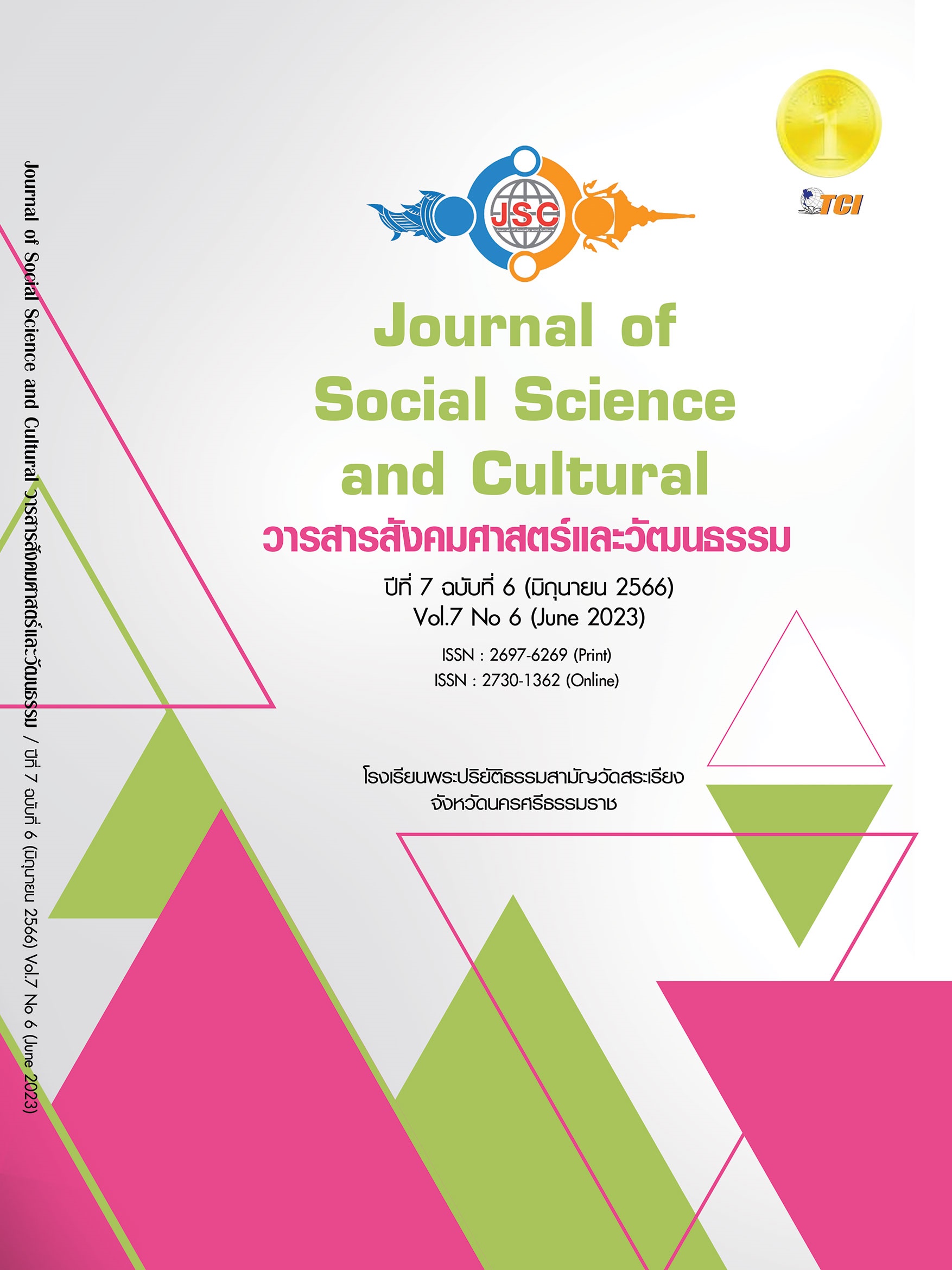THE AREA NETWORK ADMINISTRATIVE MODEL FOR LEARNING RESOURCES DEVELOPMENT OF WIANGPAPAO WITTAYAKOM SCHOOL, CHIANG RAI PROVINCE
Main Article Content
Abstract
The objective of this research article was to develop the area network administrative model for learning resource development of Wiangpapao Wittayakom School, Chiangrai province. This study used research and development method, as follows: Step 1, baseline study that data were collected via literature reviewing, survey of problems and needs of 81 stakeholders and interviewed 9 experts. Step 2, to create and review the model by 7 experts, Step 3, to implement the model by 11 school networks and 225 stakeholders, Step 4, evaluation the model by 81 stakeholder that were purposive selection. The research tools were survey form, semi-structure interview, evaluation form. Research data were mean ( ), standard deviation (S.D.), analyzed with content analysis in order to synthesize to derive at conclusions. The findings showed that 1) The school need to development the learning resources for promoting for students’ career skills and desirable characteristics, and have to coordinate and ask for cooperation from network partner; personnel, budget, materials, equipment, information technology. 2) The area network administrative model consist of 6 major components: principles, objectives, cooperation scope, school network, process, and success factors. The 5 steps of the model process consist of 2.1) Preparing, 2.2) Planning, 2.3) Doing, 2.4) Evaluating, 2.5) Result. 3) The school has developed 10 learning resources for teaching and learning, which is appropriate at the highest level, and these learning resources enable students to acquire knowledge and professional skills, and practical abilities in their daily lives. They also cultivate desirable qualities in excellence level in terms of discipline, eagerness to learn, dedication to work, and live sufficiently 4) Model’s evaluation result on propriety, feasibility, utility of model in overall was at the highest level.
Article Details
References
กล้า ทองขาว. (2558). การจัดการศึกษาแบบยึดพื้นที่เป็นฐาน: แนวคิด แนวทาง และกรณีศึกษา. วารสารราชภัฏสุราษฎร์ธานี, 2(2), 23-40.
ขจรวรรณ ภู่ขจร. (2564). รูปแบบเครือข่ายความร่วมมือระหว่างองค์กรเพื่อส่งเสริมการจัดการเรียนการสอนภาษาจีนในโรงเรียนเอกชน. ใน ดุษฎีนิพนธ์การศึกษาดุษฎีบัณฑิต สาขาวิชาการบริหารการศึกษา. มหาวิทยาลัยนเรศวร.
เจือจันทร์ จงสถิตอยู่ และอรุณศรี จิตต์แจ้ง. (2556). พลังเครือข่ายในพื้นที่. กรุงเทพมหานคร: สำนักงานกองทุนสนับสนุนการวิจัย.
ถวัลย์ มาศจรัส. (2553). Model การจัดการศึกษาและแหล่งการเรียนรู้สร้างสรรค์. กรุงเทพมหานคร: บริษัท 21 เซ็นจูรี่ จำกัด.
ทรงศักดิ์ ภูสีอ่อน. (2563). การวิจัยและพัฒนาทางการศึกษา. (พิมพ์ครั้งที่ 2). มหาสารคาม: ตักสิลาการพิมพ์.
ธนพล ด่านวิวัฒน์วงศ์ และคณะ. (2561). การบริหารแหล่งเรียนรู้โรงเรียนบ้านริมใต้ อำเภอแม่ริม จังหวัดเชียงใหม่. วารสารบัณฑิตวิจัย JOURNAL OF GRADUATE RESEARCH, 9(1), 115-130.
นิคม ชมภูหลง. (2550). นวัตกรรมการนิเทศการศึกษา: แนวทางการพัฒนาแหล่งการเรียนรู้. (ฉบับปรับปรุง). มหาสารคาม: กลุ่มนิเทศติดตามและประเมินผลการจัดการศึกษา สำนักงานเขตพื้นที่การศึกษามหาสารคาม เขต 1.
รัตนะ บัวสนธ์. (2563). การวิจัยและพัฒนานวัตกรรมการศึกษา. กรุงเทพมหานคร: สำนักพิมพ์จุฬาลงกรณ์มหาวิทยาลัย.
โรงเรียนเวียงป่าเป้าวิทยาคม. (2563). รายงานผลการปฏิบัติงานและผลการประเมินตนเองของสถานศึกษา ปีการศึกษา 2563. เชียงราย: โรงเรียนเวียงป่าเป้าวิทยาคม.
วาโร เพ็งสวัสดิ์. (2553). การวิจัยพัฒนารูปแบบ. วารสารมหาวิทยาลัยราชภัฏสกลนคร, 2(4), 2-15.
สำนักงานคณะกรรมการกฤษฎีกา. (2562). พระราชบัญญัติการศึกษาแห่งชาติ พ.ศ. 2542. กรุงเทพมหานคร: สำนักงานคณะกรรมการกฤษฎีกา.
สำนักงานคณะกรรมการการศึกษาขั้นพื้นฐาน. (2550). แหล่งเรียนรู้โรงเรียนดีใกล้บ้าน. กรุงเทพมหานคร: เสมาธรรม.
สำนักงานเลขาธิการสภาการศึกษา. (2562). ประสิทธิผลของแหล่งเรียนรู้: การเผยแพร่และการนำมาตรฐานแหล่งเรียนรู้สู่การปฏิบัติ. กรุงเทพมหานคร: พริกหวานกราฟฟิค.
สำนักงานเลขาธิการสภาการศึกษา. (2563). แนวทางการพัฒนาแหล่งเรียนรู้ในยุคดิจิทัลที่เหมาะสมกับผู้เรียนในวัยเรียน. กรุงเทพมหานคร: 21 เซ็นจูรี่.


